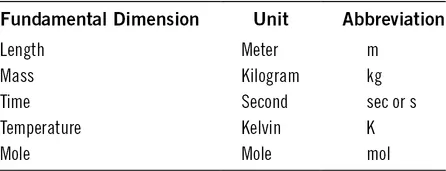
eBook - ePub
Basic Transport Phenomena in Biomedical Engineering
Ronald L. Fournier
This is a test
Compartir libro
- 654 páginas
- English
- ePUB (apto para móviles)
- Disponible en iOS y Android
eBook - ePub
Basic Transport Phenomena in Biomedical Engineering
Ronald L. Fournier
Detalles del libro
Vista previa del libro
Índice
Citas
Información del libro
- Presents a basic understanding and the theories of transport in biological systems
- Uses real-world applications in the development and design of artificial organs, drug delivery systems, and tissues
- Contributes numerous examples throughout the text with a strong discussion of the numerical methods used
- Updates each chapter with the latest research developments
- Incorporates new problems and selected complete solutions where appropriate
Preguntas frecuentes
¿Cómo cancelo mi suscripción?
¿Cómo descargo los libros?
Por el momento, todos nuestros libros ePub adaptables a dispositivos móviles se pueden descargar a través de la aplicación. La mayor parte de nuestros PDF también se puede descargar y ya estamos trabajando para que el resto también sea descargable. Obtén más información aquí.
¿En qué se diferencian los planes de precios?
Ambos planes te permiten acceder por completo a la biblioteca y a todas las funciones de Perlego. Las únicas diferencias son el precio y el período de suscripción: con el plan anual ahorrarás en torno a un 30 % en comparación con 12 meses de un plan mensual.
¿Qué es Perlego?
Somos un servicio de suscripción de libros de texto en línea que te permite acceder a toda una biblioteca en línea por menos de lo que cuesta un libro al mes. Con más de un millón de libros sobre más de 1000 categorías, ¡tenemos todo lo que necesitas! Obtén más información aquí.
¿Perlego ofrece la función de texto a voz?
Busca el símbolo de lectura en voz alta en tu próximo libro para ver si puedes escucharlo. La herramienta de lectura en voz alta lee el texto en voz alta por ti, resaltando el texto a medida que se lee. Puedes pausarla, acelerarla y ralentizarla. Obtén más información aquí.
¿Es Basic Transport Phenomena in Biomedical Engineering un PDF/ePUB en línea?
Sí, puedes acceder a Basic Transport Phenomena in Biomedical Engineering de Ronald L. Fournier en formato PDF o ePUB, así como a otros libros populares de Medicina y Biotecnologia in medicina. Tenemos más de un millón de libros disponibles en nuestro catálogo para que explores.
Información
Chapter 1Introduction
Before we can begin our study of biomedical engineering transport phenomena, let us first review some basic concepts that are essential for understanding the material in this book. You may have come across some of this material in other courses such as in chemistry, physics, and perhaps thermodynamics. Reviewing these concepts once again is still very important since these concepts form the basis of our approach to analyzing and solving biomedical engineering problems.
1.1Review of units and dimensions
1.1.1Units
Careful attention must be given to units and dimensions when solving engineering problems; otherwise, serious errors can occur in your calculations.
Units are how we describe the size or amount of a dimension. For example, a second is a common unit that is used for the dimension of time. In this book, we use primarily the International System of Units, which is also known by its abbreviation SI, for Système international d'unités. Other systems of units are also used, such as the English and American engineering systems and the centimeter-gram-second (cgs) system. We will come across some of these non-SI units as well in our study. The units of these other systems may be related to the SI units by appropriate conversion factors. Table 1.1 provides a convenient summary of common conversion factors that relate these other units to the SI system.
Table 1.1 Conversion Factors

It is important to remember that in engineering calculations you must always attach units to the numbers that arise in your calculations, unless they are already unitless. Furthermore, within a calculation, it is important to use a consistent system of units, and in this book we recommend that you work with the SI system. In the event that a number has a non-SI unit, you will first need to convert those units into SI units using the conversion factors found in Table 1.1. Also, remember to treat the units associated with a number as algebraic symbols. Then, as long as the units are the same, you can perform operations such as addition, subtraction, multiplication, and division on the like units, thereby combining and, in some cases, even cancelling them out.
1.1.2Fundamental dimensions
The measurement of the physical properties we are interested in are derived from the fundamental dimensions of length, mass, time, temperature, and mole. Table 1.2 summarizes the basic SI units for these fundamental dimensions. The SI unit for length is the meter (m) and that for time is the second (sec).
Table 1.2 SI Units for the Fundamental Dimensions

1.1.2.1Mass and weight
The mass of an object refers to the total amount of material that is in the object. The mass is a property of matter and is the same no matter where the object is located. For example, the mass of an object is the same on Earth, on Neptune, or if it is just floating along somewhere in space. In SI units we measure the mass of an object in kilograms (kg). Remember that the mass of an object is different than the weight of an object. Weight is the forc...